How Fast Can a Cane Corso Run? The Impressive Answer!
Updated on
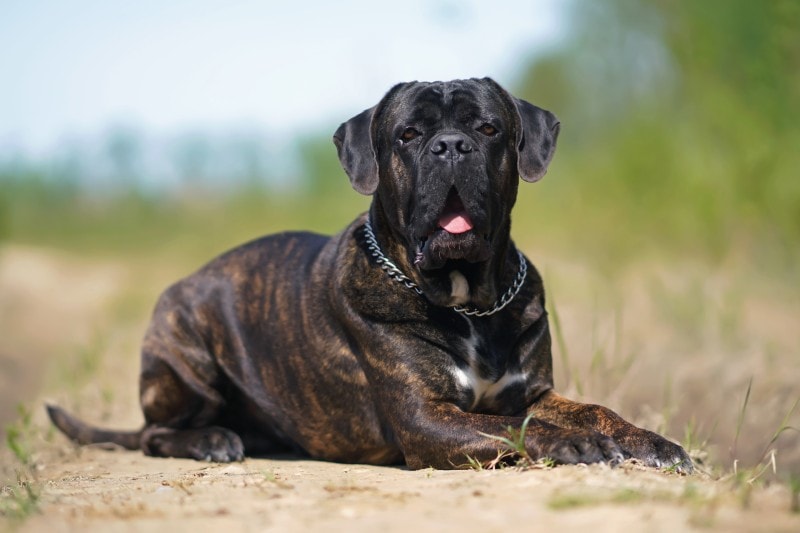
The Cane Corso is a large, powerful, Mastiff breed of Italian origin that has grown increasingly popular over the last decade. Known for being loyal, strong-willed, and protective, this breed is also highly athletic. These dogs outperform all other mastiff breeds when it comes to agility, energy levels, speed, and overall athleticism.
The Cane Corso has been recorded to run at nearly 30 miles per hour, which is pretty impressive considering its size and heaviness. Of course, not all Cane Corsos will be able to reach these top speeds, and these speeds are calculated during agility competitions of especially athletic individuals.
 The Speed of the Cane Corso
The Speed of the Cane Corso
The Cane Corso is muscularly built, full of energy, and very agile. Their speed has been tested during the AKC’s Fast CAT (Course Ability Test) in a timed 100-yard dash. In this competition, each dog runs one at a time, chasing a lure.
The top-ranked Cane Corso for the Fast CAT Lifetime Rankings is a male named Pirates Den Jean Lafitte Don’t Fail Me Now, who was clocked in at 29.79 miles per hour. In the most recent competition between the Cane Corso breed in 2023, the fastest was a female named Bugatti, who reached a top speed of 27.54 miles per hour.
To compare, the fastest record of a human male’s running speed is 23.35 miles per and a human female’s is 21.32 miles per hour. The average running speed for most humans, however, falls between 5 and 6 miles per hour.
According to the American Kennel Club, the top five ranked dogs in each breed are invited to the following year’s Fast CAT Invitational which is in December of each year in Orlando, Florida.

Top 5 Fast CAT Cane Corso 2023 Rankings
| Miles Per Hour | Sex |
| 27.54 | Female |
| 27.43 | Female |
| 27.25 | Male |
| 27.13 | Male |
| 26.66 | Female |
Does the Cane Corso Enjoy Running?
The Cane Corso can make a great running companion since they are highly athletic and have high energy levels. These dogs also make incredible hiking companions due to their stamina and sense of adventure.
It’s recommended that large breed puppies not be run until they reach full skeletal maturity, which is typically between 18 months and 2 years of age. Always talk to your veterinarian about the best time to start a jogging or running regimen with your young Cane Corso.
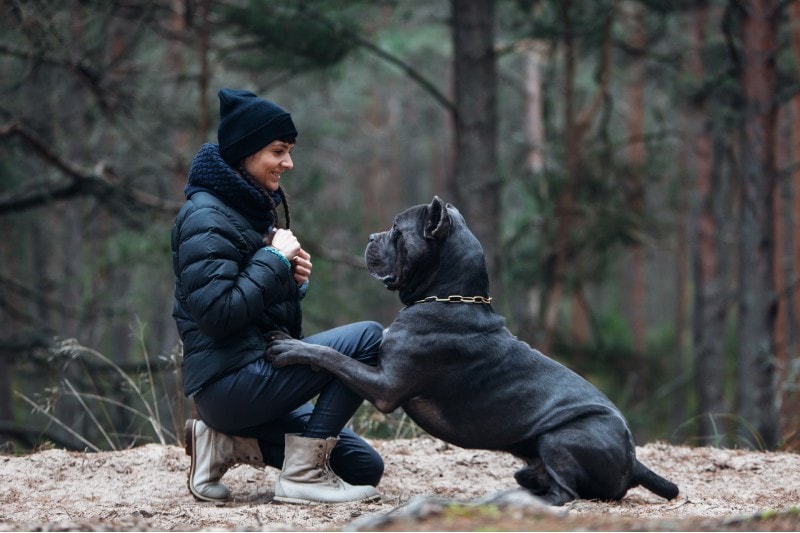
Predisposition to Hip Dysplasia
Most large breed dogs are predisposed to hip dysplasia due to their size, and the Cane Corso is no exception. Hip dysplasia is a condition of the skeletal system where the ball and socket of the hip do not fit or develop properly.
With hip dysplasia, the ball and socket rub and grind against one another, leading to deterioration over time and loss of function of the joint. Genetic predisposition can be exasperated by several other factors including obesity, a nutritionally unbalanced diet, certain types of exercise, and excessive growth rates.
This is a very painful condition and any time a dog shows clinical signs of hip dysplasia, it should be taken to the veterinarian as soon as possible for evaluation. If your Cane Corso is showing any signs of pain, lameness, or any telltale signs of hip dysplasia, they should avoid exercise until they have been evaluated and treated.
Signs of Hip Dysplasia
- Lameness
- Limping with no obvious sign of injury or trauma
- Cracking and popping sounds from the hip joints
- “Bunny hopping” while running
- Having trouble standing
- Abnormal sitting positions
- Trouble getting on and off furniture
- Trouble climbing stairs
- Trouble getting into the car
- Laying down more than usual
- Abnormal sitting position
Keeping Your Cane Corso Healthy and Physically Fit
Keeping your Cane Corso as healthy as possible is the best way to ensure they live a long, happy life as your beloved companion. Owners must be aware of the best ways to ensure proper health and fitness to keep their dogs in optimal health.

Work With a Reputable Breeder
Reputable breeders are very important for the success and betterment of each breed. When purchasing a puppy, owners must do thorough research and find a responsible breeder who does the proper health testing for the dogs in their breeding program.
Health testing will rule out genetic health conditions and ensure that only the top genetic specimens carry on the bloodline. Having a healthy puppy that was responsibly bred is key to your Cane Corso’s long-term health. Many will often come with a health guarantee and all veterinary records since birth.
Feed a High-Quality Diet
A high-quality diet is important for the health of any living being, including our beloved canine companions. A Cane Corso should be fed a premium quality diet that is nutritionally balanced for their age and activity level. Any questions regarding your Cane Corso’s dietary needs should be discussed with your veterinarian.

Ensure They Maintain a Healthy Weight
Keeping your dog at a healthy weight will help with ensuring they are in optimal physical condition. Avoid overfeeding and offer treats sparingly as a training reward to prevent your Cane Corso from becoming overweight or obese. Excess weight can put a lot of stress on the bones and joints and can leave your dog at risk of suffering from more severe health conditions that can result from obesity.
Daily Exercise Is a Must
The Cane Corso is active and energetic. They aren’t your typical couch potato like some other Mastiff breeds. They will require at least one hour of exercise per day to keep up with their physical needs. Not only is exercise good for physical health, but it’s also a great way to keep them mentally stimulated and prevent unwanted behaviors.
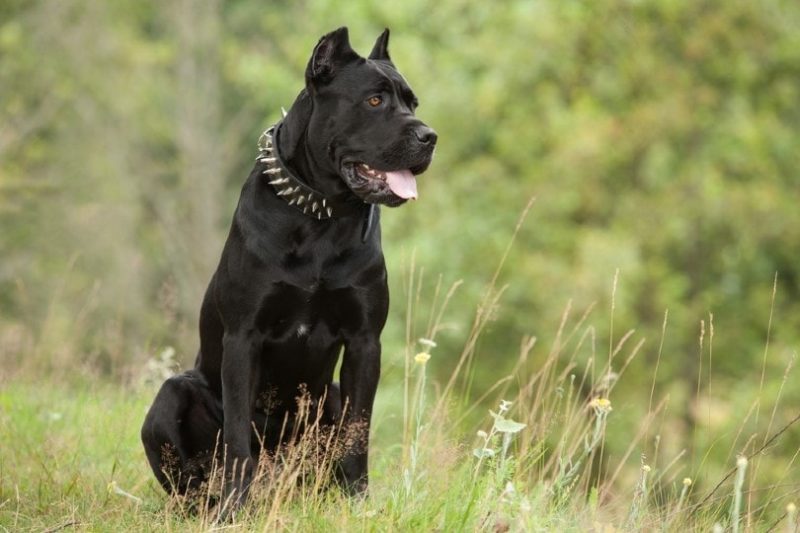
Keep Up With Regular Veterinary Care
As for any breed, your Cane Corso should be established with a veterinarian and receive regular wellness checkups. They should remain up to date with their necessary vaccinations and be placed on parasite preventatives. If your dog ever shows any unusual signs or behaviors, you should never hesitate to reach out to your vet for further guidance and evaluation.
 The Top 10 Fastest Dog Breeds in the World
The Top 10 Fastest Dog Breeds in the World
The Cane Corso can run at a decent speed when compared to other dog breeds, but they fall short of making the list of the fastest dog breeds in the world. Here’s a look at some of the fastest breeds and their record speeds.
Greyhound
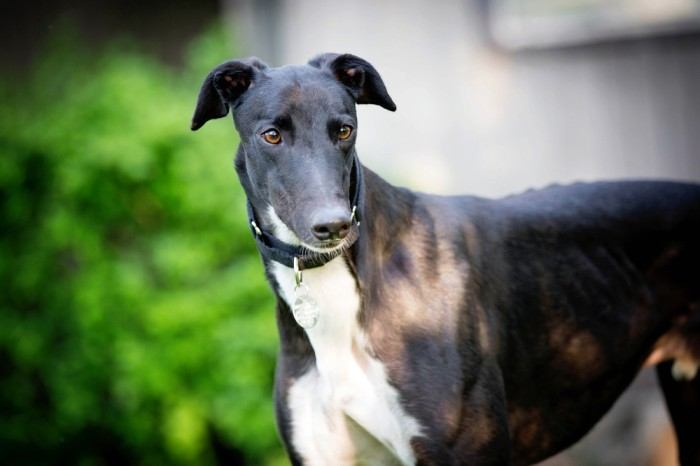
The calm, good-natured Greyhound makes excellent family pets and is one of the least active breeds when kept as pets. They are the most popular racing dog, as they are the fastest breed in the world though, reaching speeds of up to 45 miles per hour. They can even maintain a speed of 35 miles per hour for up to a 7-mile distance.
Saluki
The Saluki is known as Egypt’s royal dog and one of the most ancient breeds of domestic dogs. As far as speed goes, these dogs are right behind the Greyhound reaching top speeds of nearly 43 miles per hour.
Afghan Hound

This hunting hound breed from Afghanistan, the Afghan Hound with its long, silky coats has been clocked running at speeds as high as 40 miles per hour.
Vizsla
The Vizsla is a very lean, muscular, athletic hunting breed from Hungary. These active dogs have been known to reach speeds of 40 miles per hour.
Ibizan Hound
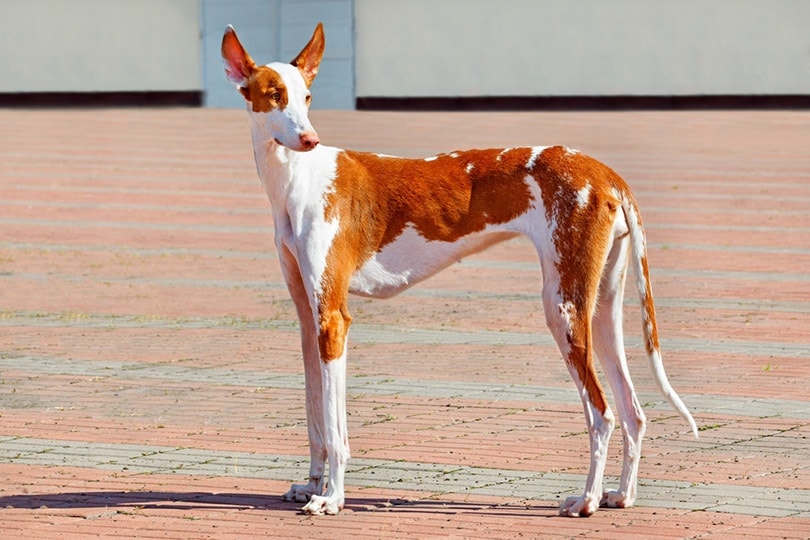
Ibizan Hounds are native to Ibiza, an island off the coast of Spain in the Mediterranean Sea. These lean, unique-looking dogs reach speeds as fast as the Vizsla, clocking in at around 40 miles per hour at their top speed.
Dalmatian
The Dalmatian is a hunting breed from Croatia that was popularized in the United States after the 1961 release of the Disney classic 101 Dalmatians. The breed has been known to reach up to 37 miles per hour at a dead sprint.
Whippet
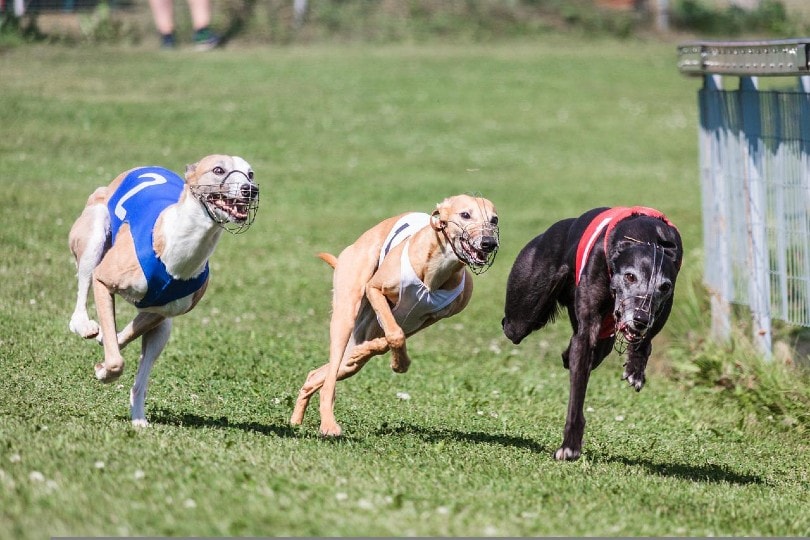
The Whippet is a medium-sized breed descended from the Greyhound. Originating in England, it’s no wonder this breed is among the top 10 fastest in the world with their ancestry. They have been recorded reaching up to 35 miles per hour.
Borzoi
The Borzoi is a Russian Sighthound that used to go by the name Russian Wolfhound until 1936. This distinct-looking breed was popular among Russian aristocrats and was tasked to hunt wolves, foxes, and hares. They have been known to reach maximum speeds of 35 miles per hour.
Jack Russell Terrier

The Jack Russell Terrier is an English breed that was developed to flush foxes and other ground-dwelling animals from their dens and burrows during hunts. This small breed is very quick, reaching speeds of up to 30 miles per hour. Which is quite impressive with those tiny legs.
Border Collie
The Border Collie is known for being one of the most intelligent dog breeds on the planet. This Scottish herding dog is impressively quick and agile too, reaching up to 30 miles per hour.
 Final Thoughts
Final Thoughts
The Cane Corso may not have made the list for being among the top 10 fastest dog breeds in the world, but they’ve reached impressive speeds of up to 29.79 miles per hour in the AKC’s Fast CAT competition. The fastest Cane Corso in Fast CAT for 2023 ran at 27.54 miles per hour.
These dogs may be large and muscular, but they are energetic and active, making them excellent running companions after they reach full skeletal maturity, though you likely won’t be keeping up with their top speed.
- Related Read: How Fast Can a Dalmatian Run? Facts & Exercising Tips
Featured Image Credit: Eudyptula, Shutterstock
 The Speed of the Cane Corso
The Speed of the Cane Corso The Top 10 Fastest Dog Breeds in the World
The Top 10 Fastest Dog Breeds in the World










